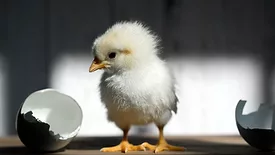Columns
Hydronics Workshop | John Siegenthaler
Comparing air-to-water versus ductless heat pump systems
An alternative to ductless
August 2, 2024
Editorial Opinion | Nicole Krawcke
AI solves pain points for contracting businesses
Artificial Intelligence is meant to augment your business, not replace employees.
July 12, 2024
Guest Editorial | Pook Villegas
Optimizing efficiency in commercial installations
The role of BIM tools.
July 11, 2024
Guest Editorial | Josh Weiss
Deepfakes are here: Here’s how plumbing and HVACR companies can prepare
Best practices to mitigate negative impacts to public perception.
July 11, 2024
Service Plumbing Pros | Matt Michel
6 groups every plumber should join
The benefits of networking.
July 10, 2024
Heating Perceptions | Scott Secor
Not all employees work out
Word of mouth can work well for attracting new employees… until it doesn’t.
July 5, 2024
Contractor's Corner | Dave Yates
Discussing thread sealants with Oatey
Pipe dope.
July 2, 2024
The Blue Collar Coach | Kenny Chapman
How organizational charts accelerate team efficiency
A game plan for success.
July 2, 2024
Hydronics Workshop | John Siegenthaler
Follow established piping layouts to prevent reverse thermosiphoning
Reversals revealed.
July 1, 2024
Keep your content unclogged with our newsletters!
Stay in the know on the latest plumbing & piping industry trends.
JOIN TODAY!Copyright ©2025. All Rights Reserved BNP Media.
Design, CMS, Hosting & Web Development :: ePublishing

















